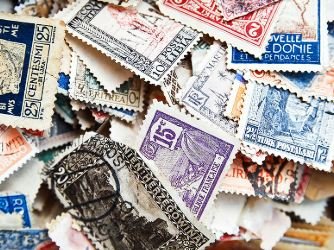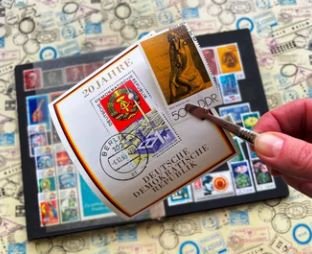For many stamp collectors, one of the most exciting aspects of philately is discovering rare errors and varieties in stamps. These imperfections, whether a misprint, color variation, or production mistake, can significantly increase the value of a stamp and make for a fascinating addition to a collection. However, exploring errors and varieties in stamps is not without its challenges. What may seem like an incredible find could turn out to be a costly confusion, as not all errors are as rare or valuable as they appear. In this article, we will delve into the world of exploring errors and varieties in stamps, looking at both the potential rewards and the pitfalls collectors face when uncovering these unique items.
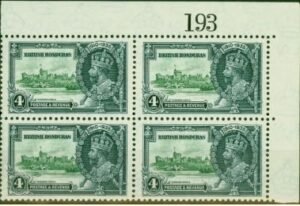
What Are Stamp Errors and Varieties?
Before diving into the pros and cons of exploring errors and varieties in stamps, it’s essential to understand what these terms mean in the world of philately.
- Stamp Errors: These are mistakes that occur during the printing or production process of a stamp. Common errors include misprints, color shifts, inverted or missing images, or perforation mistakes. Errors can make a stamp rare and highly sought after by collectors if the mistake is rare enough and was not discovered during production. Some famous errors include the “Inverted Jenny” stamp, which features an upside-down airplane—a mistake that has become one of the most iconic and valuable stamps in the world.
- Stamp Varieties: Unlike errors, which are typically the result of a flaw in production, varieties refer to differences in stamps that occur due to intentional changes, such as slight design modifications, color shades, or other distinguishing characteristics. These varieties can be minor but still offer collectors an interesting challenge to identify and collect.
Exploring errors and varieties in stamps can be a rewarding aspect of collecting, but it requires a sharp eye and deep knowledge of stamp production processes. Not every variation or error is equally valuable, and collectors need to learn how to differentiate between genuine rarities and common mistakes.
The Appeal of Exploring Errors and Varieties in Stamps
For many collectors, exploring errors and varieties in stamps offers an exciting challenge. Here are some reasons why collectors are drawn to this aspect of the hobby:
- Value and Rarity: Stamps with genuine errors or unique varieties often carry a significantly higher value than standard issue stamps. A collector may come across a misprint or a printing mistake that turns out to be an extremely rare find, significantly increasing the worth of their collection. The prospect of discovering such treasures makes the hunt for errors and varieties particularly alluring.
- Unique Pieces of History: Each error or variety can be seen as a piece of history, capturing a specific moment in time when something went wrong in the printing process or when a design choice led to a unique variation. Exploring errors and varieties in stamps allows collectors to own and study pieces of postal history that would otherwise not exist.
- A Challenge for the Knowledgeable Collector: For experienced philatelists, the quest to find rare errors and varieties adds a layer of complexity and excitement to their hobby. The process of identifying a valuable error requires a deep understanding of printing processes, stamp history, and the specific traits of a collection. This challenge makes exploring errors and varieties in stamps a rewarding intellectual pursuit for many collectors.
- Increased Market Demand: If you are fortunate enough to discover a rare error or variety, the potential for selling or trading it for a substantial profit exists. Collectors who specialize in errors and varieties often see an increase in demand for these items, making it a profitable aspect of the hobby for some.
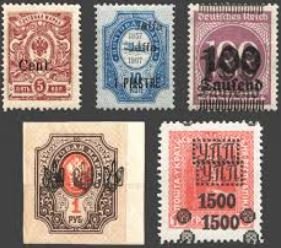
Stamp collecting and travel is a hobby that appeals to both seasoned collectors and travel enthusiasts. Collecting stamps allows individuals to connect with the cultures, history, and art of the places they visit. For those who travel frequently, each stamp becomes a tangible memento that represents a piece of their journey, preserving the memories of places they’ve been and experiences they’ve had.
The Pitfalls of Exploring Errors and Varieties in Stamps
While the idea of exploring errors and varieties in stamps may seem thrilling, there are several challenges and risks involved. Not all errors are worth their weight in gold, and collectors must exercise caution to avoid costly confusion. Some of the potential drawbacks include:
- Not All Errors Are Valuable: One of the biggest misconceptions about exploring errors and varieties in stamps is that all errors automatically increase the value of the stamp. In reality, some errors are more common than others and may not significantly affect the stamp’s value. For example, a printing mistake on a widely produced stamp might be a rare occurrence, but if it’s not sought after by collectors, it might only be worth a fraction of its potential price.
- Identifying Genuine Errors: One of the biggest challenges in exploring errors and varieties in stamps is differentiating between genuine errors and minor imperfections. For example, slight discoloration or a misaligned perforation may look like an error but is part of the normal printing process. Inexperienced collectors might mistake these minor flaws for valuable errors, leading them to overestimate the worth of their collection.
- Misleading Auctions and Sales: The stamp market can be a breeding ground for misinformation. Some sellers might knowingly or unknowingly misrepresent a stamp as an error or a variety to inflate its price. Buyers who are not well-versed in exploring errors and varieties in stamps may end up paying significantly more than the stamp’s actual worth. Always buy from reputable dealers or auction houses with proven track records to minimize the risk of costly confusion.
- Complexity and Time Commitment: Exploring errors and varieties in stamps is not a quick process. It requires time, effort, and significant research to correctly identify a rare error or a unique variety. Even experienced collectors may find themselves stumped when trying to determine if a stamp is genuinely valuable or simply a misprint. The search for valuable errors can also be frustrating, as not every error will lead to a rare find.
- Market Saturation: In some cases, stamps with errors or varieties may become so widely known and collected that their value plateaus. As more collectors discover and collect these errors, the market may become saturated, and prices may drop. While exploring errors and varieties in stamps can be a lucrative endeavor, the potential for market fluctuation can make it a risky investment.
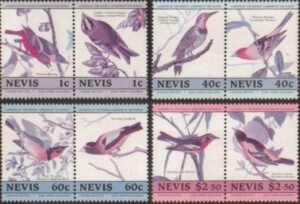
Tips for Exploring Errors and Varieties in Stamps
If you’re passionate about exploring errors and varieties in stamps, here are some tips to help you make the most of your search:
- Do Your Research: Knowledge is key when it comes to exploring errors and varieties in stamps. Study stamp catalogs, specialized philatelic books, and online resources to learn more about the stamps you’re collecting and the types of errors that can occur during production. The more you know, the better equipped you will be to spot a genuine rarity.
- Examine Stamps Closely: Use a magnifying glass or a jeweler’s loupe to closely inspect your stamps. Minor errors like ink smudges, color shifts, or slight misprints can be hard to detect with the naked eye, but a magnifying lens can help you spot these small imperfections.
- Consult Experts: If you believe you’ve found a potential error or variety, consider getting a second opinion from an expert or a reputable dealer. Professional philatelists can help you confirm the authenticity and value of a stamp before you make any decisions.
- Join a Philatelic Society: Becoming a member of a stamp-collecting club or society can be beneficial for those interested in exploring errors and varieties in stamps. These groups often have access to resources, expert advice, and a network of collectors that can help you identify and assess errors and varieties.
Conclusion: A Fascinating Discovery or Costly Confusion?
Exploring errors and varieties in stamps is undeniably one of the most exciting and rewarding aspects of stamp collecting. The thrill of uncovering a rare, valuable error or variety can make it feel like a passionate journey of discovery. However, as with any hobby, there are risks involved, and not every error or variety is a treasure. The key to success in exploring errors and varieties in stamps is to combine your enthusiasm with patience, research, and a careful approach. By doing so, you can avoid costly confusion and instead focus on uncovering the true gems of philately.


